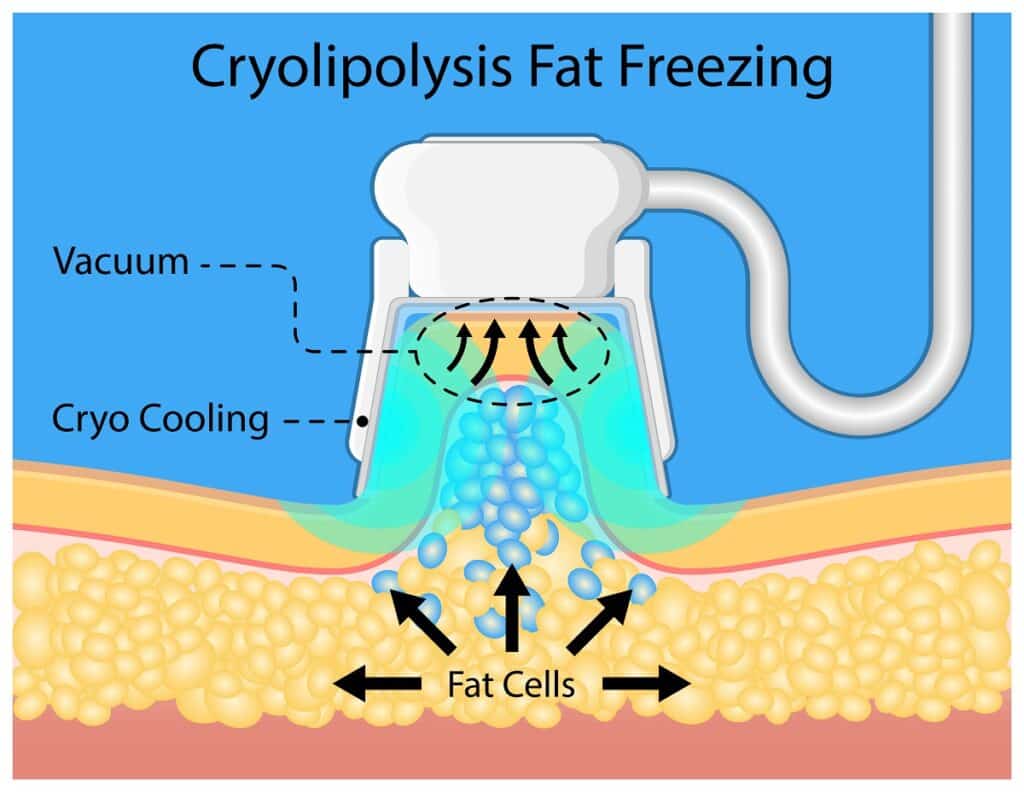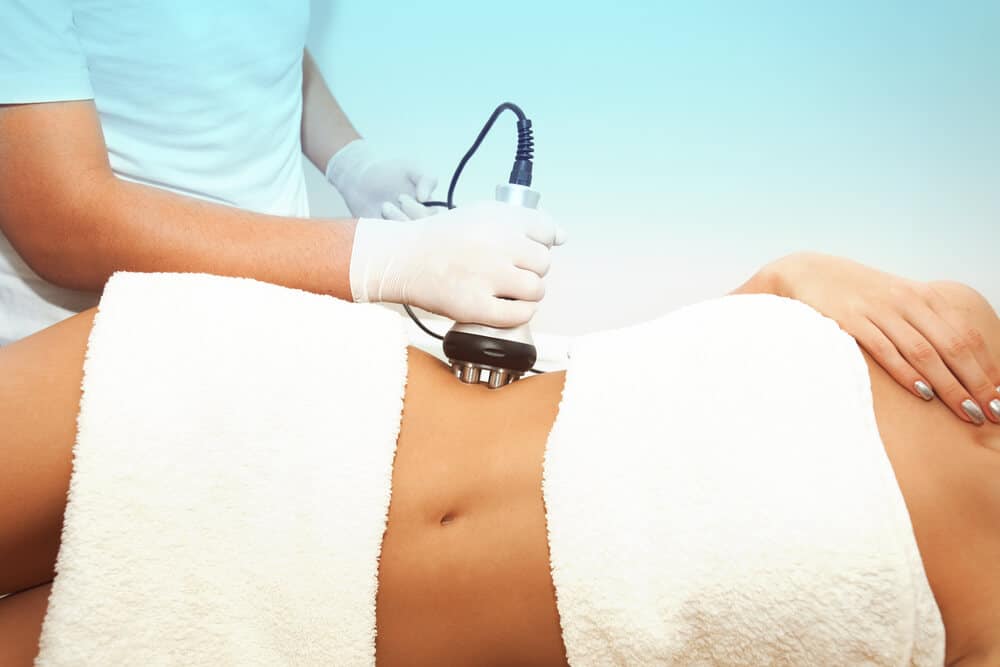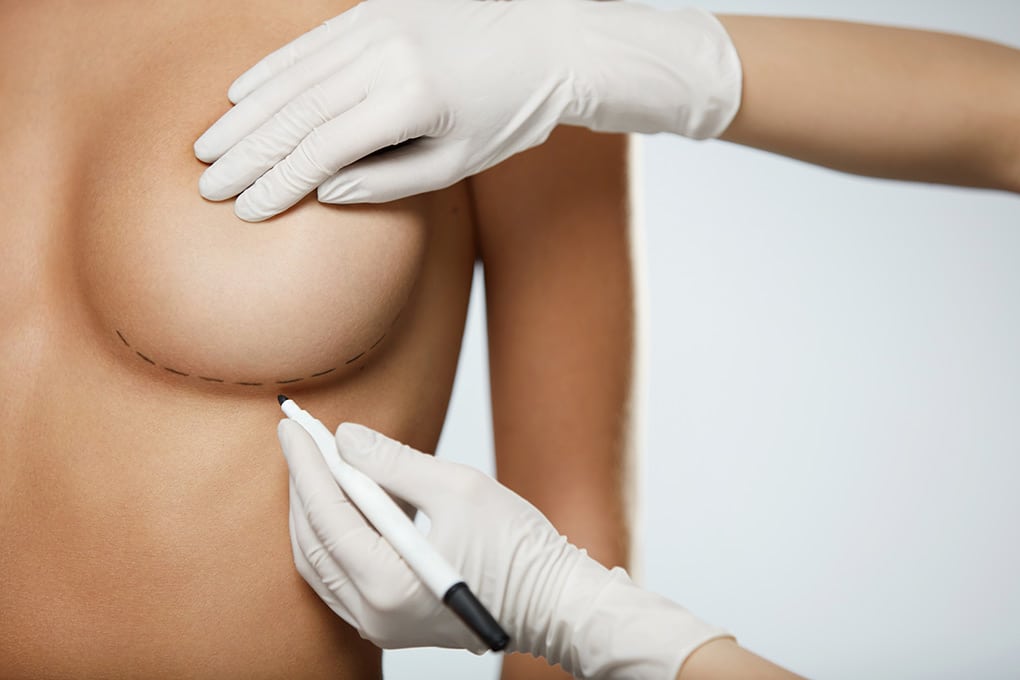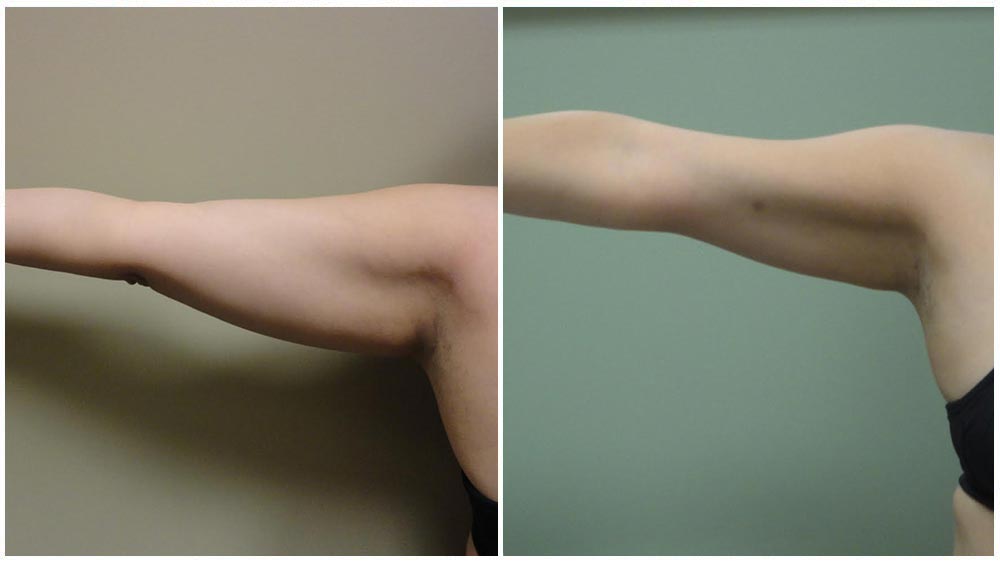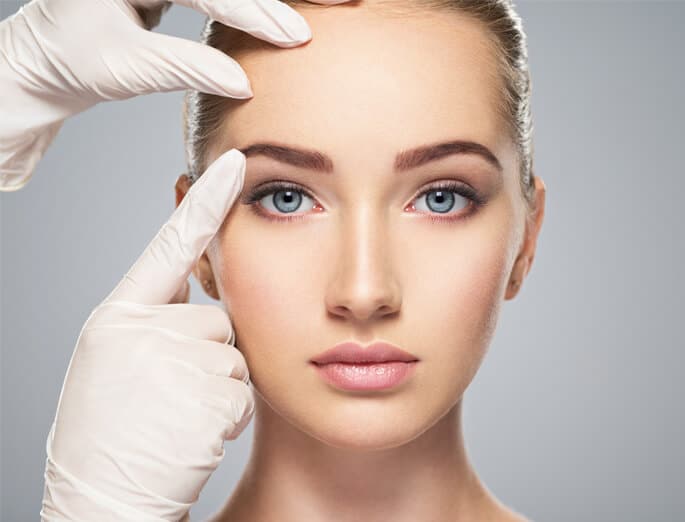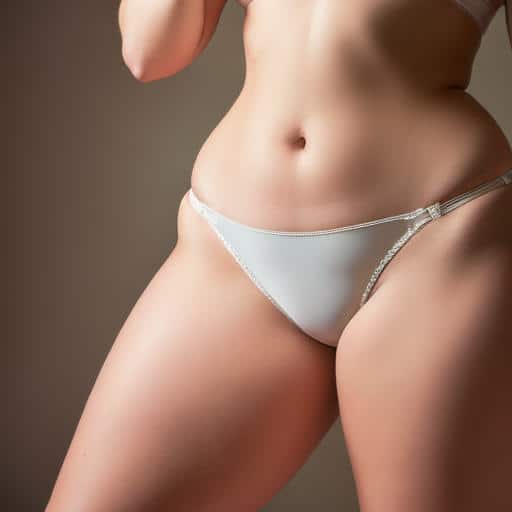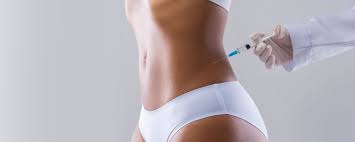Did you know that over 80% of people experience stretch marks, wrinkles, milia, and consider cosmetic surgery or scar removal at some point? Skin resurfacing with laser treatments is a game-changer in reducing these stubborn marks. This laser treatment technique can rejuvenate your skin, making it smoother and more even-toned. Forget about expensive creams that don’t work.
Skin resurfacing for stretch marks offers real results by targeting the deeper layers of your skin. Whether you’re dealing with post-pregnancy marks or growth spurts, this skin resurfacing treatment can help. It’s time to discover how this treatment, including laser stretch mark reduction and laser stretch mark removal, can transform your skin and boost your confidence.
Understanding Stretch Marks
Definition
Stretch marks are lines or streaks on the skin. They develop when the skin stretches rapidly. This can happen due to growth spurts, pregnancy, or weight gain, often leading to laser stretch mark reduction or laser stretch mark removal. The skin’s middle layer, called the dermis, tears under sudden stretching.
Causes
Skin elasticity is crucial for preventing stretch marks. Rapid growth or weight changes can exceed the skin’s elastic limit, making laser stretch mark removal necessary. This causes visible stretch marks. Hormonal changes during puberty or pregnancy also contribute.
Common Areas
Stretch marks often appear on the abdomen, thighs, and breasts. These areas experience significant stretching. For example, pregnant women frequently get stretch marks on their bellies. Adolescents might see them on their thighs during growth spurts, prompting thoughts of stretch mark removal.
Emotional Impact
Stretch marks can affect self-esteem. Many people feel embarrassed by these skin scars. They may avoid wearing certain clothes, like swimsuits, to hide their marks. This can lead to emotional distress and a negative body image, prompting some to consider stretch mark removal.
Cosmetic Concerns
Cosmetic concerns drive many to seek stretch mark reduction methods. Creams and lotions claim to reduce their appearance of stretch mark removal but offer limited results. Laser treatments and microdermabrasion are more effective but costly.
Treatment Options
There are several potential stretch mark treatments:
- Topical creams with retinoids
- Laser therapy targeting the dermis
- Microdermabrasion to remove outer skin layers
- Chemical peels for deeper exfoliation
Each method has pros and cons. Consulting a dermatologist is advisable before choosing a treatment.
Prevention Tips
Preventing stretch marks involves maintaining healthy skin elasticity. Staying hydrated and using moisturizers helps. Gradual weight changes also reduce the risk of developing new stretch marks.
Overview of Skin Resurfacing Techniques
Laser Therapy
Laser skin resurfacing uses light beams to remove layers of stretch mark skin. This treatment can improve skin texture and elasticity. Stretch marks become less visible after several sessions. There are two main types: ablative and non-ablative lasers for stretch mark treatment.
Ablative lasers remove the top layer. Non-ablative lasers target deeper layers without removing the surface, addressing stretch mark concerns. Both types stimulate collagen production, which helps in reducing stretch marks.
Dermabrasion
Dermabrasion involves exfoliating the skin’s top layer, including stretch marks, using a rotating instrument. It removes damaged skin cells, promoting new skin growth. This method is effective for less severe stretch marks.
The procedure may cause redness and swelling. Recovery time varies, but it usually takes about 1-2 weeks for a stretch mark. Dermabrasion suits individuals with lighter skin tones as it may cause pigmentation changes in darker skin and stretch mark.
Microneedling
Microneedling uses tiny needles to create micro-injuries on the skin’s surface, helping with stretch mark treatment. This triggers the body’s healing process, boosting collagen and elastin production, reducing stretch marks. The technique is suitable for all skin types and tones, including those with stretch marks.
Multiple sessions are required for noticeable results. Each session lasts about 30 minutes to an hour. Microneedling has minimal downtime, making it a popular choice for those with busy schedules and stretch mark concerns.
Choosing the Right Procedure
Selecting the appropriate skin resurfacing treatment for stretch mark depends on several factors
- Skin type: Some treatments work better on certain skin tones and stretch mark.
- Stretch mark severity: Deeper or older stretch marks may need more intensive treatments.
- Recovery time: Consider how much downtime you can manage.
Consulting a dermatologist is essential before deciding on a treatment for a stretch mark. They can assess your skin and recommend the best option for stretch mark treatment.
Effectiveness Comparison
Laser therapy often provides quicker results for stretch mark but may require more recovery time. Dermabrasion is effective for minor stretch marks but may not suit darker skin tones. Microneedling offers a balance between effectiveness and minimal downtime.
Each method has its pros and cons:
- Laser Therapy: Quick results, higher cost, longer recovery
- Dermabrasion: Good for minor marks, risk of pigmentation changes
- Microneedling: Suitable for all skins, minimal downtime
Exploring Laser Therapy
Targeting Stretch Marks
Laser therapy targets stretch marks by removing layers of skin. This process stimulates collagen production. Collagen is a protein that helps keep the skin firm, smooth, and reduces stretch marks. The laser light penetrates the skin, causing controlled damage. This triggers the body’s natural healing process.
Types of Lasers
Different types of lasers are used for stretch mark treatment. Fractional lasers are popular. They treat small areas of skin at a time. This makes them less invasive and reduces recovery time. Ablative lasers remove the outer layer of skin completely. Non-ablative lasers heat up the underlying skin tissue without damaging the surface.
Fractional Lasers
Fractional lasers create tiny wounds in the skin. These wounds promote new collagen growth. They improve the texture and appearance of stretch marks. Patients often see results after a few sessions.
Ablative Lasers
Ablative lasers are more intense. They remove the top layer of skin entirely. This can lead to more significant improvement in severe stretch marks. However, they require a longer recovery period.
Immediate Skin Changes
After laser therapy, the treated area may appear red and swollen. Some patients experience mild discomfort. The skin might also feel warm to the touch.
Recovery Timeline
The recovery time varies depending on the type of laser used. For fractional lasers, it usually takes about one week for initial healing. Full recovery can take a few weeks.
For ablative lasers, recovery may take longer. Patients might need several weeks to heal completely.
Aftercare Tips
Proper aftercare is crucial for optimal results. Patients should avoid sun exposure and apply sunscreen regularly. Keeping the treated area moisturized helps with healing.
Dive into Dermabrasion
Dermabrasion Process
Dermabrasion involves scraping away the top layers of skin. Cosmetic dermatologists use a specialized tool for this procedure. The tool has an abrasive surface that removes damaged skin. This process reveals smoother, new skin underneath.
The procedure is often done in a cosmetic skin surgery center. It can take about 30 minutes to an hour, depending on the area treated. New collagen materializes as the skin heals, improving the appearance of stretch marks.
Healing Timeline
After dermabrasion, the skin needs time to heal. Redness and swelling are common right after the procedure. These symptoms usually subside within a week.
Skin recovery can take several weeks. During this time, it’s crucial to follow post-procedure care instructions. Use gentle cleansers and avoid sun exposure. Moisturizers like cocoa butter can help keep the skin hydrated.
Results may start to appear within a few weeks. Full results are typically visible after three months. The healing process allows new collagen to form, which helps reduce the appearance of stretch marks.
Suitability for Skin Types
Dermabrasion is suitable for various skin types. However, individuals with darker skin tones may experience discoloration or hyperpigmentation. It’s essential to consult a dermatologist to determine if dermabrasion is right for you.
This procedure works well for fresh stretch marks that are still red or purple. Older, white stretch marks might not respond as effectively. Cosmetic dermatologists can assess your condition and suggest the best treatment plan.
Post-Procedure Care
Proper care after dermabrasion is vital for optimal results. Here are some key steps:
- Keep the treated area clean.
- Apply prescribed ointments to prevent infection.
- Avoid picking at scabs or peeling skin.
- Use sunscreen to protect healing skin from UV rays.
Following these steps helps ensure smooth recovery and better outcomes.
Microneedling Benefits
How it Works
Microneedling creates tiny punctures in the skin. These micro-injuries trigger the body’s healing process. Collagen and elastin production increases. This helps to repair and rejuvenate the skin.
Collagen is a protein that keeps skin firm. Elastin provides elasticity, allowing skin to stretch and return to its original shape. By boosting these proteins, microneedling can improve skin texture and reduce stretch marks.
Cumulative Effect
Multiple treatments are necessary for optimal results. Each session builds on the previous one. Typically, three to six sessions are recommended. Treatments are spaced four to six weeks apart.
Improvement starts to show after the first few sessions. Full results may take several months. Patience is key as the body needs time to produce new collagen and elastin.
Minimal Downtime
Microneedling has minimal downtime compared to other resurfacing techniques. The procedure involves tiny needles, so recovery is quick. Most people experience redness and minor swelling for a few days.
Unlike more invasive methods, microneedling does not require extensive healing time. Normal activities can usually be resumed within 24 hours. This makes it a convenient option for busy individuals.
Side Effects
Side effects of microneedling are generally mild. Common issues include:
- Redness
- Swelling
- Slight bruising
- Dryness
These effects typically resolve within a few days. Proper aftercare can minimize discomfort. It’s important to follow post-treatment instructions provided by your healthcare provider.
Retinol and Topical Treatments
Retinol Creams
Retinol is a popular non-invasive treatment for stretch marks. Derived from vitamin A, retinol creams work by promoting skin renewal. They stimulate the production of new collagen, which helps improve skin texture and elasticity.
Retinol creams encourage cell turnover. This process helps fade the appearance of stretch marks over time. Regular use can lead to noticeable improvements in skin tone and texture.
Application Timeline
Consistency is key when using retinol for stretch marks. Most people see results after 6 to 12 weeks of regular application. Applying the cream daily ensures the best outcomes.
It’s important to be patient. Stretch marks will not disappear overnight. Continued use is essential for long-term benefits.

Side Effects
Retinol can cause side effects. Common issues include skin irritation and dryness. These may occur during the initial weeks of use.
Sensitivity to sunlight is another concern. Using sunscreen daily is crucial to protect the skin. Avoiding direct sun exposure can help prevent further damage.
Other Topical Treatments
There are other topical treatments available for stretch marks. These include products containing hyaluronic acid and peptides. Such ingredients also promote collagen production and improve skin hydration.
e cosmetic treatments combine retinol with other active ingredients. This enhances the overall effectiveness of the treatment.
Addressing Pigmentation Issues
Stretch marks can cause hyperpigmentation or hypopigmentation. Retinoid creams help even out skin tone by reducing discoloration.
Topical treatments containing vitamin C can also be beneficial. They brighten the skin and reduce pigmentation issues associated with stretch marks.
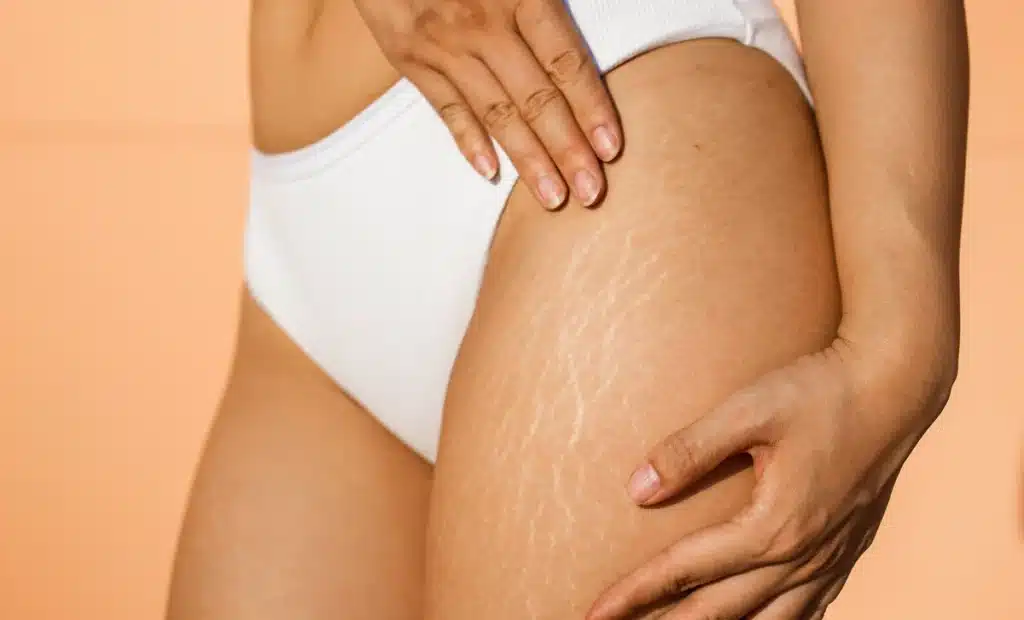
Combining Treatments
For better results, some people combine retinol with other cosmetic treatments like microneedling. Microneedling creates tiny punctures in the skin, enhancing the absorption of topical products.
Combining treatments can accelerate the healing process. It’s important to consult a dermatologist before starting any combined regimen.
Home Remedies Insight
Aloe Vera
Aloe vera is a popular home remedy. It helps with skin healing and reduces stretch marks. Applying fresh aloe vera gel directly to the skin can improve its appearance.
People often use it daily for better results. The gel should be left on the skin for at least 20 minutes before washing off.
Coconut Oil
Coconut oil is another effective remedy. It moisturizes the skin deeply. This helps to make stretch marks less noticeable.
Applying coconut oil twice a day can show improvements over time. It also has anti-inflammatory properties, which benefit the skin.
Vitamin E
Vitamin E is known for its skin benefits. It promotes cell regeneration and improves skin texture.
Using vitamin E oil or capsules on stretch marks can help. Massage the oil into the skin regularly for better results.
Cocoa Butter
Cocoa butter is widely used for treating stretch marks. It hydrates and nourishes the skin.
Applying cocoa butter daily can reduce the visibility of stretch marks. Many people find it effective due to its moisturizing properties.
Combining Remedies
Combining these home remedies with professional treatments can enhance results. For example, using aloe vera alongside laser therapy can improve outcomes.
Professional treatments may offer quicker results. However, home remedies provide additional support and care for the skin.
Hydration
Staying hydrated is crucial for preventing stretch marks. Drinking plenty of water keeps the skin elastic and healthy.
Proper hydration helps maintain skin moisture levels. This reduces the risk of developing new stretch marks.
Diet
A balanced diet also plays a role in skin health. Eating foods rich in vitamins A, C, and E supports skin repair and regeneration.
Including fruits, vegetables, and nuts in your diet can help prevent stretch marks. These foods provide essential nutrients for healthy skin.
Exercise
Regular exercise improves blood circulation. This benefits overall skin health and can reduce stretch mark formation.
Exercises like yoga and strength training are beneficial. They keep the skin firm and elastic, reducing the chances of stretch marks.
Pre and Post Treatment Care
Pre-Treatment
Preparing the skin for resurfacing is crucial. Follow your provider’s instructions closely. Avoid sun exposure for at least two weeks before the procedure. Sunburned skin can complicate the treatment.
Cleanse your skin thoroughly on the day of the procedure. Do not apply any makeup or lotions. Some providers may recommend stopping certain medications. Discuss all medications with your provider to avoid complications.
Post-Treatment
Post-treatment care is vital for healing. Keep the skin hydrated by using a gentle moisturizer. Avoid direct sunlight as much as possible. Use sunscreen with SPF 30 or higher when going outside.
Refrain from strenuous activities that cause sweating. This helps prevent irritation and infection. Do not pick at scabs or peel the skin. Let it heal naturally to avoid scarring.
Follow-Up Appointments
Follow-up appointments are essential. They help monitor progress and address any complications early. Your provider will check for signs of infection or adverse reactions. Adjustments in care may be made based on your healing process.
Attend all scheduled follow-ups to ensure optimal results. Missing these appointments can delay recovery and affect complete results.
Home Care Tips
Continue proper skin care at home after treatments. Use mild, non-abrasive cleansers to clean your face gently. Apply a thick layer of moisturizer several times a day to keep the skin soft.
Avoid using harsh skincare products like retinoids or exfoliants until fully healed. Stick to products recommended by your provider. Hydration remains key, so drink plenty of water daily.
Emotional Support
Skin resurfacing can be emotionally challenging. Seeing immediate results might take time, and patience is necessary. Share your experience with close friends or family for emotional support.
Joining online forums or support groups can also help. Many people go through similar procedures and can offer advice and encouragement.
Final Remarks
You’ve now got a solid grip on stretch marks and the many ways to tackle them. Whether it’s laser therapy, microneedling, or even home remedies, there’s a method out there that fits your needs. Understanding your options helps you make informed decisions about your skin care journey.
Don’t wait. Start exploring these treatments today and reclaim your confidence. Your skin deserves the best, and so do you. Ready to take the next step? Dive deeper into our resources and find the perfect solution for your stretch marks.
Frequently Asked Questions
What causes stretch marks?
Stretch marks occur due to rapid skin stretching. Common causes include pregnancy, weight gain, and growth spurts.
How does laser therapy help with stretch marks?
Laser therapy stimulates collagen production. This reduces the appearance of stretch marks and improves skin texture.
Is microneedling effective for stretch marks?
Yes, microneedling promotes collagen and elastin production. It helps improve the texture and color of stretch marks.
What are the benefits of using retinol for stretch marks?
Retinol boosts cell turnover and collagen production. This helps fade stretch marks over time.
Can dermabrasion remove stretch marks completely?
Dermabrasion can significantly reduce their appearance but may not remove them entirely. It exfoliates the top skin layer, promoting new skin growth.
Are home remedies effective for treating stretch marks?
Home remedies like aloe vera and coconut oil can moisturize and improve skin elasticity. However, they may not be as effective as professional treatments.
What should I do before and after skin resurfacing treatments?
Before treatment, avoid sun exposure and follow your dermatologist’s advice. After treatment, keep the area clean, moisturized, and protected from the sun.

